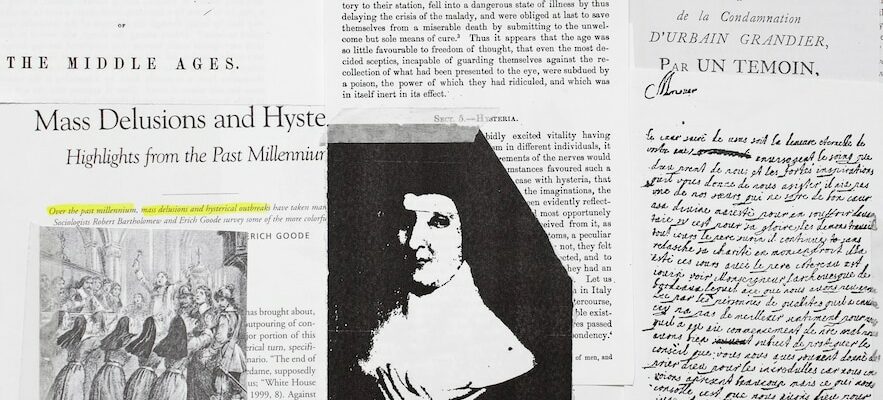In 2007, in Chalco, Mexico, in a boarding school led by the Catholic Church of Korea, 600 young girls – most of native origin – lost the use of their legs for several months, without any physiological cause to This paralysis is not detected. Four centuries earlier, in Spain, 27 nuns of the San Placido convent disturbed the silence of the places with unexplained transes, cries and “obscene behaviors”. In the United Kingdom, in 1787, and in the United States, in 1886, it was epileptic crises which simultaneously struck a community of workers. From the Middle Ages to the present day, from witch hunting to the TICS epidemic in users of the Tiktok social network, these phenomena affecting groups of women abound all over the world, described in turn by the media and scientific studies Like a “possession”, a “mysterious evil” or a “collective hysteria”.
Since 2016, Laia Abril has been working on the subject. In his research based on research, the Spanish artist explores opaque themes linked to feminism, mourning and biopolitics through photography, video, sound, textual matter and archives. At the ball, the Parisian place dedicated to the contemporary image created in 2010 by the editor Diane Dufour and the photographer Raymond Depardon, the 38 -year -old Barcelona presents the third part of her vast project, A story of misogynywhose first two chapters were devoted to abortion and rape.
Laia Abril, Mass Hysteria Folder #1: France, 1400-1632 Nuns / Meowing and Trance-Like State Epidemic, 2023.
/ © Courtesy Galerie Les Filles du Calvaire, Paris © Laia Abril
We Mass Hysteriawhich is the subject of a publication (Delpire & Co, 2024) and an exhibition, thus addresses another facet of “systemic control of the body of women through the centuries and the continents”, with sixty files Pin back to the wall, mixing iconographies, press articles and scientific interpretations, which relate these phenomena, all eras and countries combined. At the center of the system, Laia Abril develops three contemporary case studies: that of Chalco, mentioned above, an epidemic of faintings in workers of a fabrication factory in Cambodia, another of Tics in an American high school.
Each case gives rise to a sound testimony of women affected by these collective symptoms, of images evocative of their story, but also to the interpretation often edifying by the doctors of these episodes, as well as to the reactions of the authorities, which nail Porori the “victims”, accused of acting by mimicry, of trying to stand out or to be, more prosaically, “under the influence of their hormones”. The artist delivers her conclusions as to the origin of these psychosomatic disorders which she examined with experts, including the sociologist of medicine Robert Bartholomew.
The latter noted that what is called “mass psychogenic diseases” today “mostly affects adolescent girls or women subject to a very powerful psycho-social stress”, events occurring most frequently within Repressive environments: yesterday convents or orphanages, then boarding schools, schools, factories, now social networks. Hysteria once theorized by Charcot (1825-1893) becomes here a “language of resistance”, which has known powerful mutations with the digital explosion, when these epidemics, formerly circumscribed to a precise place and group, were Brew virtually, recently during confinements. An exciting exploration to see and read.
Laia Abril – On Mass HysteRIA / A History of MYSOGINIAat the ball (Paris XVIII) until May 18, 2025.
